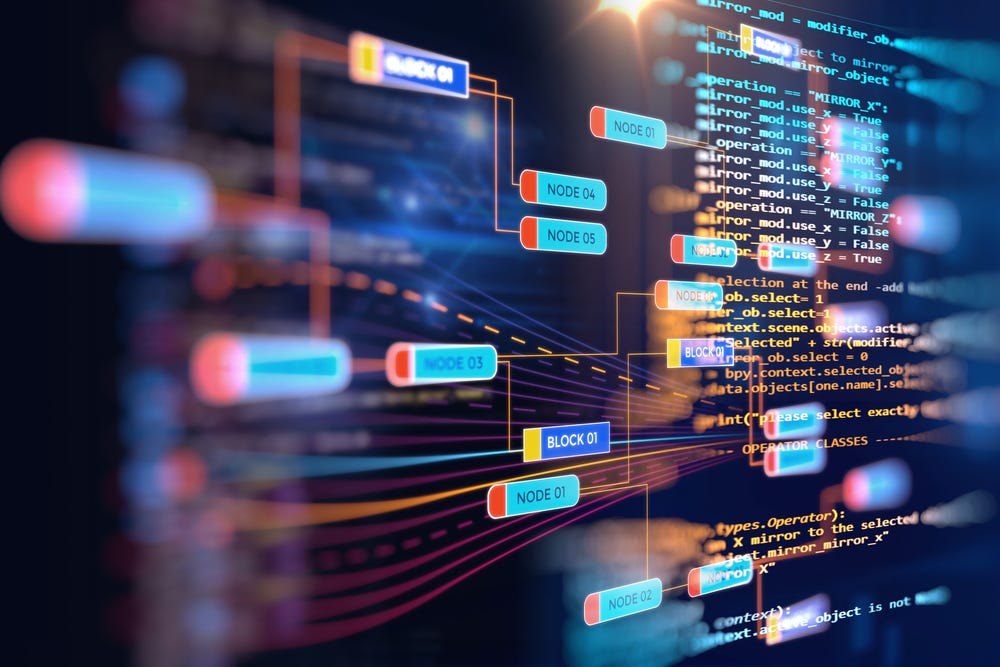Latest news about Bitcoin and all cryptocurrencies. Your daily crypto news habit.

Right now, there are millions of bits of data stored on every public blockchain. Its potential value is immense.
And yet, there’s not yet an easy way to view it comprehensively, which means we can’t study it, track it, or otherwise put it to good use.
This is a lost opportunity, namely because there’s so much that could be done with that data. For example, if we seed this data into a machine learning model, we could track trends that would help us prevent nefarious user behavior — things like piracy or drug trafficking.
Right now, we only use the blockchain for transactional purposes.
We use the Bitcoin blockchain to send money from one address to another. With Ethereum’s smart contracts, individual addresses on the blockchain can call for a function on another address. But still, the data is only being used for transactional or state-machine purposes.
What we need to be thinking about is: how is that money being moved? Where is it going? Who’s doing what? And what addresses can we identify as scammers or terrorist addresses — hubs of the dark web?
Imagine if we could tag those addresses. We could then generate a model to prevent money from going to an exchange or address we know to be the property of terrorists, drug dealers, or otherwise bad actors.
This would prove useful for individuals, companies, and intelligence agencies. But such a functionality would also allow us certain economic insight, such as the ability to predict the price of a token over time, which we can do by tracking trends in speculation and movement.
The problem is, we don’t yet have a mechanism available to help us do that tracking.
Users can look at the blockchain and access information pertaining to transactions they and the people around them have made, but they can’t do that on a broader scale or in a manner that’s meaningfully visualized. In Ethereum, it’s easy to track one user through etherscan, but not a bunch of users all at once.This, of course, prohibits us from doing potentially valuable things with that data, such as tracking where money is moving.
One reason for this is the blockchain itself is still in the proof of concept stage. Its data structure has proven to be sound, but it hasn’t evolved to the point where it offers obvious utility. It’s still just a mechanism for storing data. But now that there is tons of data, it’s the equivalent of an untapped gold mine.
But that will change soon. The data is there — it’s there to be used, and it’s there to be experimented with.
Now is the time to start using data on the blockchain to create utility.
In many ways, the nascency of the blockchain resembles that of the internet in its early stages.
When the internet first started, it was really just a community of computers that were connected to each other. That community generated data, sure, but there wasn’t much of it.
But then, when more and more people started using it, the amount of data increased exponentially. People realized that if they were going to be able to use that data — to learn from it, access it, read it, create more of it in a manner that would allow other people to find it — they would need some kind of enhanced search capability.
And that’s one big reason why search engines — and later, social media platforms — were born.
The blockchain is due for a similar reckoning. On Ethereum and Bitcoin alone, millions of transactions have been made. ICOs have been created. We’ve entered a new era where this technology has been adopted on a scale similar to that of the internet in the early 90’s.
What we need are applications designed specifically to make use of this data.
This sort of technology is already widely available in other sectors. There are companies (like Palantir) who collect and analyze data related to phone calls, bank accounts, and messages, and provide that information to the FBI to assist in the search for suspects. Something similar could easily be built to track, analyze, and utilize data collected across the various blockchains.
All we need is an interface laid on top of this sort of philosophical foundation, along with software focused on answering questions like, “What is it I’m looking for? Which addresses am I looking for?”
It’s only a matter of time before companies start offering this kind of functionality — but the sooner, the better. Much value could be derived from the data available on the blockchain, but the blockchain is also public and entirely decentralized, which means that anybody can do anything on it. Anybody can create an address and move money around.
Building mechanisms to help us track and use data on the blockchain isn’t just an opportunity. It’s a means of keeping our money — and our data — safe.
Yes, We Can Make Use Of The Data Stored On The Blockchain. Here’s How was originally published in Hacker Noon on Medium, where people are continuing the conversation by highlighting and responding to this story.
Disclaimer
The views and opinions expressed in this article are solely those of the authors and do not reflect the views of Bitcoin Insider. Every investment and trading move involves risk - this is especially true for cryptocurrencies given their volatility. We strongly advise our readers to conduct their own research when making a decision.